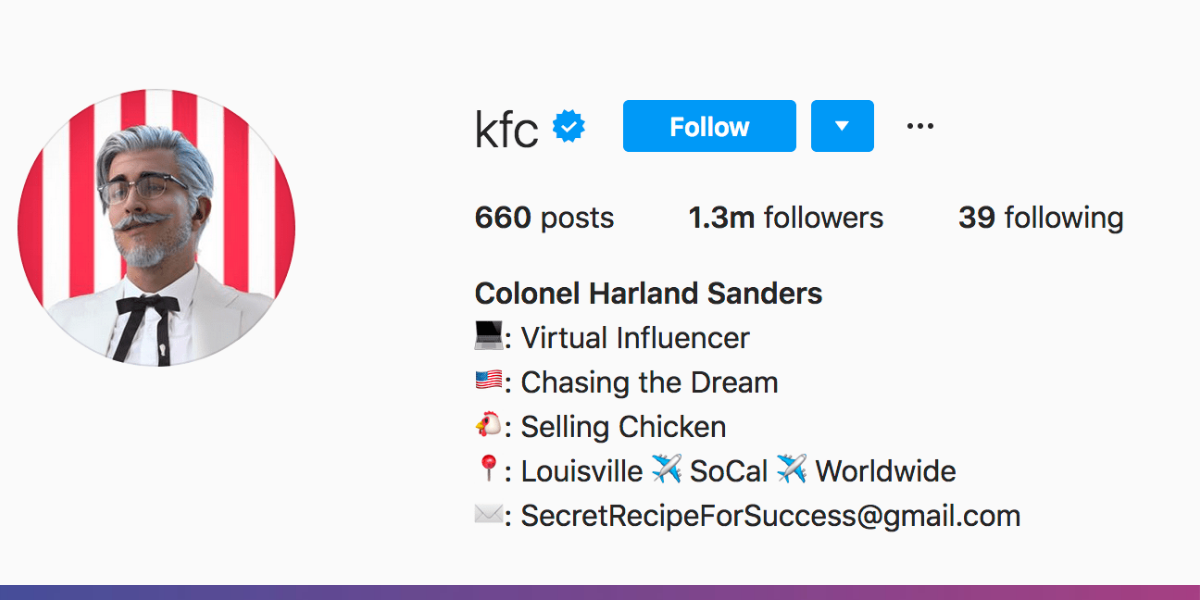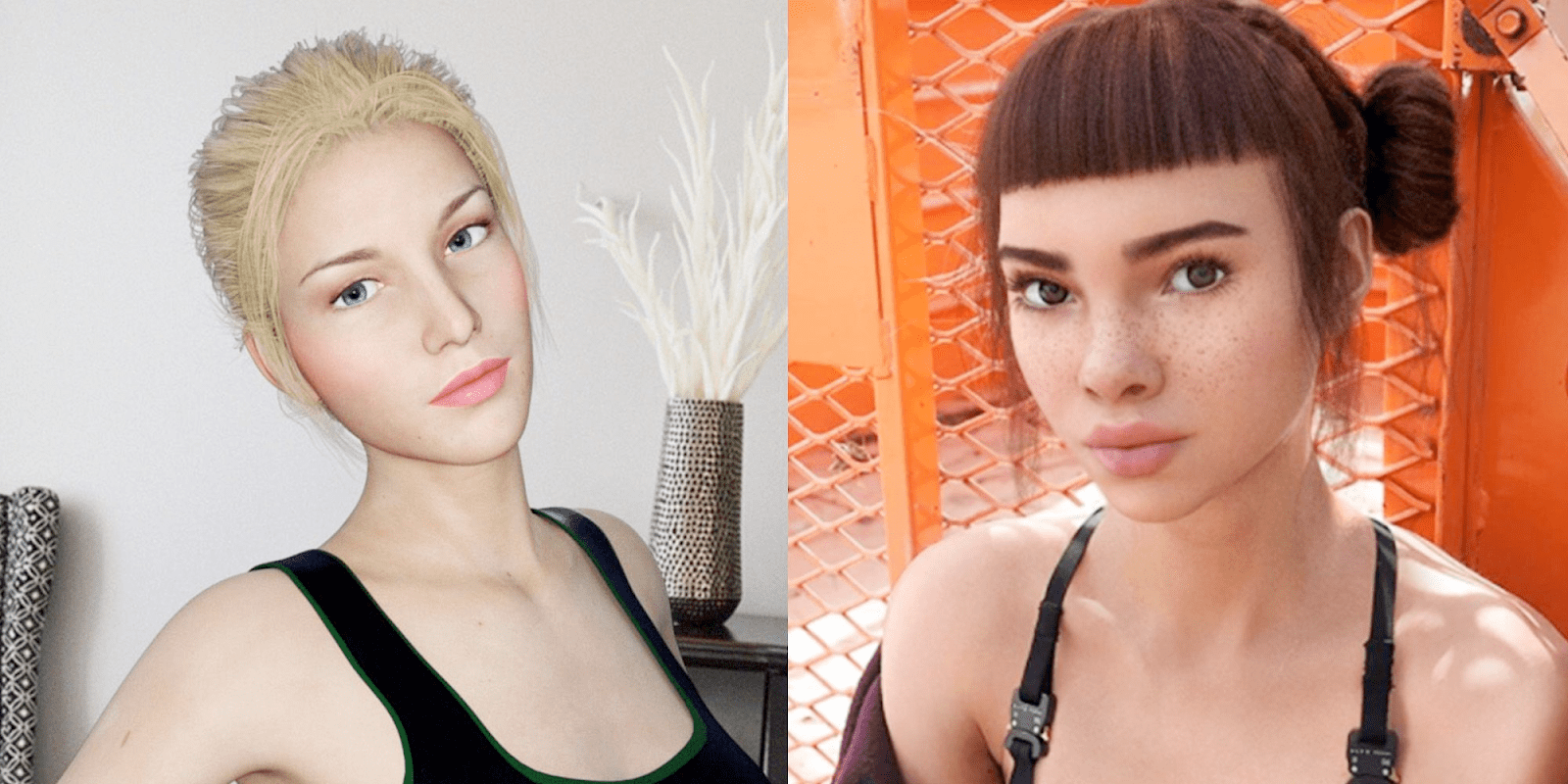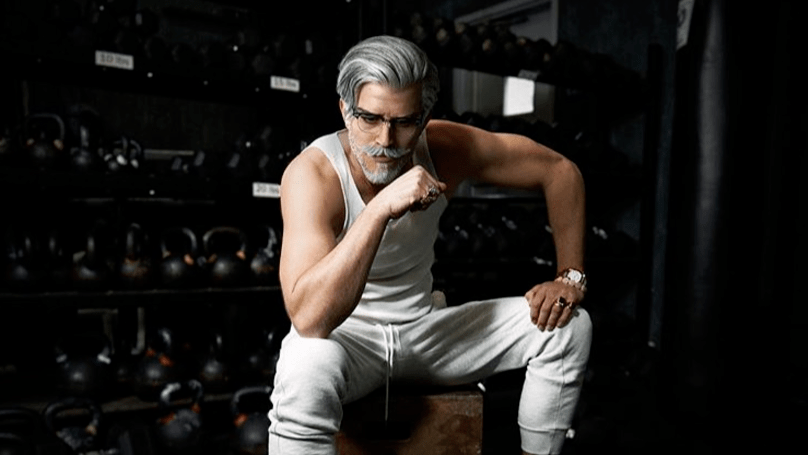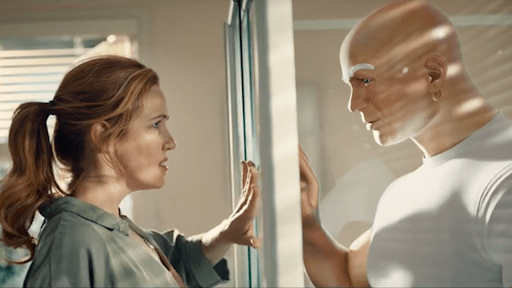Last April, 2018 the internet was ablaze with beef between two celebrity influencers. No, not KSI and Logan Paul, who famously brought their social media rivalry to life later that August. Instead, the fight was Lil Miquela v Bermuda, two influencers with one unusual thing in common – they don’t technically exist. Both Lil Miquela, who has over one and a half million followers, and her rival Bermuda, who has 129,000 followers, are CGI generated characters that post as if they actually exist.
The sheer novelty of an Insta feud between (what was essentially) two photorealistic cartoons was enough to steal national headlines. Their falling out resulted in coverage from Elle, The Verge, and other major publications. This was only amplified by a sudden wave of very real brand deals, from big names such as Coach and Balenciaga joining in on the fun. But the craze soon died down, and these influencers – although imaginary – soon settled into the everyday flow of Instagram.
Which brings us to April 10, 2019, when global food brand KFC embraced virtual influencers with their newest iteration of the Colonel, “Virtual Influencer Colonel.” V.I.C. comes complete with a slick styled undercut, washboard abs, and a killer moustache. He’s exactly what you’d expect from the pitch “It’s the KFC Colonel, only way hotter.”
KFC is one of the world’s most recognizable brands, and many marketers look at their activity as a pseudo weather vane for popular culture. Their tongue-in-cheek foray into the virtual influencer world is a strong signal that the space will continue to grow.
Aside from a few laughs, the Virtual Colonel campaign is also a good moment to look at virtual influencers in context. While novel and exciting, these imaginary personalities aren’t exactly bending any paradigms just yet. If anything, they are a natural evolution in storytelling and world building. Influencer Colonel’s volcanic smoulder and perfectly groomed beard can be seen as a bigger brother to the humorous Mr. Clean Super Bowl commercial from 2017.
Furthermore, people have been willing to interact with parody accounts as if they were real since the dawn of social media. To this day, people talk back to sassy Darth Vader (half a million followers) and Bored Elon Musk (1.6 million followers) on Twitter, indulging in the fantasy of speaking to a fake friend. That’s not even mentioning the very real and human emotions that get thrown around when talking to Alexa and Siri (ask either one to open the Pod Bay doors and see what I mean).
For an even better example, look at Google Pixel’s virtual version of Childish Gambino: an Augmented Reality sticker featuring the Multi-Grammy winner himself. During a recent Google campaign, Open Influence tasked creators with putting the new Playmoji to the test, dancing in sync with a computer-generated simulacrum.
Donald Glover might be real, but his groovy avatar certainly has more in common with Virtual Sanders than one would first assume. Both draw on the increasingly blurry line between digital media and the physical world, require a suspension of disbelief in order to work, and are pushing the boundaries of what it means to be an “influencer.”
As we mentioned in a previous blog, there are a few major upsides to “partnering” with virtual influencers. First and foremost, a digital avatar isn’t going to suddenly fly off-book and cause as scandal. There’s also the inherent novelty of the concept, which will only become more relevant as AR and VR grab hold of pop culture. And, of course, it opens the door to further storytelling avenues.
Don’t be surprised to see more virtual influencers populating your feed going forward. Is it the next big thing collabs between virtual influencers and the real ones?










